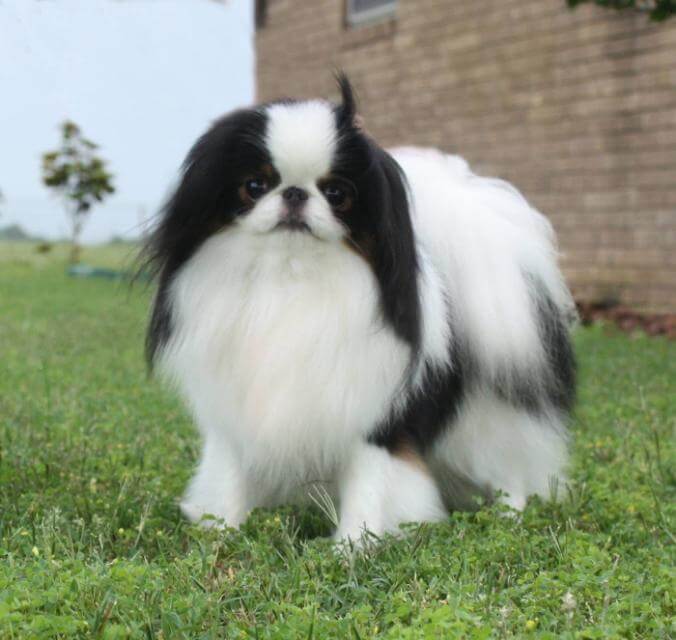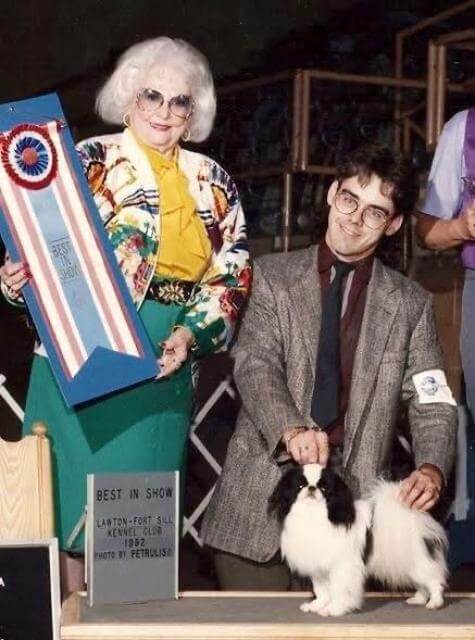


Home » Five Things You May Not Know About the Japanese Chin

1. The Chin used to be called the Japanese Spaniel. The name officially changed to Japanese Chin in 1977.

2. Chin were bred to make the sound “woo” or “ooohm,” which, according to Buddhism, are the two perfect sounds of the Universe. Ancient statues of Chin or Foo Dogs, always in sets of two, have one with a mouth open and one with a closed mouth, representing both sounds. If you’ve ever seen a Chin “woo,” it’s quite special. They start with a silent stretch with their nose in the air. You can almost see the sound coming from their little feet, all the way up and finally out of their tiny mouths. They take this communication quite seriously and it’s all designed for our entertainment. Chin were bred on their 32 signs of a perfect man, which describe Buddha himself. Come to a JCCA seminar to learn about all of these traits the master breeders incorporated into these tiny canine Buddhas!

3. Geishas used to be in charge of pampering the Chin, giving them small bits of ice and feeding them rice, fine meats, and a bit of saki. To this day, Chin are particular about their food preferences. When they like their food they’re good eaters, but finding what they like can sometimes be a challenge—and we blame the Geishas!
4. Small Chin were prized in the palaces of 200 years BC. This was also true of the Chin sought after by wealthy Victorian women following the influences of Queen Victoria who was gifted Chin from Commodore Perry after opening the Silk Road trade route to Japan. Victoria’s daughter in-law, Alexandria, procured some lovely small Chin through the years, making them even more in fashion with the elite European ladies who paid sea captains handsome fees to bring them back to Europe on their ships. Some went themselves and had to buy them at markets, and turn down the larger canine specimens they’d try to sell for top dollar. They soon learned to ask for “Ichiban” which meant “number one” in Japanese. Only then would the fancy small Chin be offered to them.

5. Chin are a non-evolving breed. The Chin of 200 BC looked exactly the same as they do today. We know this from the murals and paintings in the ancient Buddhist temples.
To learn more about the wonderful world of Japanese Chin, please visit: www.japanese chinclubofamerica.org.
